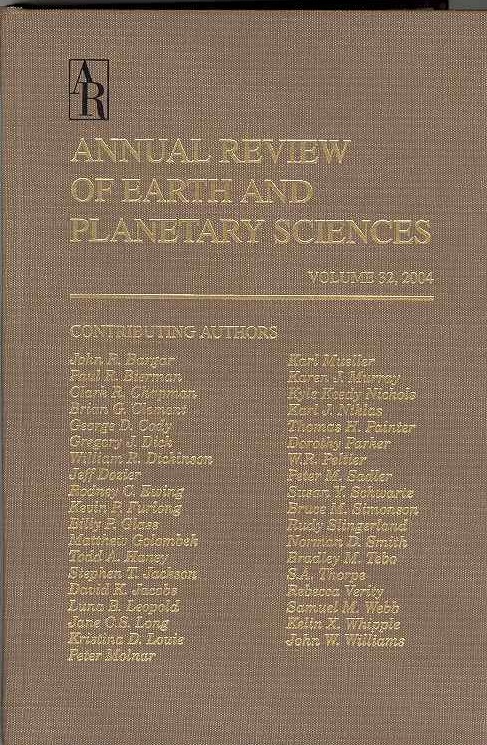Cenozoic History of the Indonesian Gateway
IF 13
1区 地球科学
Q1 ASTRONOMY & ASTROPHYSICS
Annual Review of Earth and Planetary Sciences
Pub Date : 2024-02-21
DOI:10.1146/annurev-earth-040722-111322
引用次数: 0
Abstract
The tectonically complex Indonesian Gateway is part of the global thermohaline circulation and exerts a major control on climate. Waters from the Pacific flow through the Indonesian Archipelago into the Indian Ocean via the Indonesian Throughflow. Much progress has been made toward understanding the near-modern history of the Indonesian Gateway. However, the longer-term climate and ocean consequences of Australia's progressive collision with the Eurasian Plate that created it are less known. The gateway initiated ∼23 Ma, when Australia collided with Southeast Asia. By ∼10 Ma the gateway was sufficiently restricted to create a proto–warm pool. During the Pliocene it alternated between more or less restricted conditions, until modern oceanic conditions were established by 2.7 Ma. Despite its tectonic complexity, climate modeling and Indian and Pacific scientific ocean drilling research continue to yield insights into the gateway's deep history. ▪ The Indonesian Gateway is a key branch of global thermohaline oceanic circulation, exerting a major control on Earth's climate over the last the 25 Myr. ▪ We find that a complex interplay of tectonics and sea level has controlled Indonesian Gateway restriction since 12 Myr, resulting in La Niña– and El Niño–like states in the equatorial Pacific ▪ Long term Indonesian Gateway history is best determined from ocean drilling cores on the Indian and Pacific sides of the Indonesian Gateway, as records from within it are typically disrupted by tectonics. ▪ Model simulations show the global impact of the Indonesian Gateway. Further modeling with ocean drilling/tectonic research will enhance our understanding of Cenozoic Indonesian Gateway history.Expected final online publication date for the Annual Review of Earth and Planetary Sciences, Volume 52 is May 2024. Please see http://www.annualreviews.org/page/journal/pubdates for revised estimates.印度尼西亚门户的新生代历史
构造复杂的印度尼西亚门户是全球温盐环流的一部分,对气候具有重要的控制作用。来自太平洋的水流通过印尼群岛,经由印尼贯穿流进入印度洋。在了解印度尼西亚通道的近现代历史方面已经取得了很大进展。然而,人们对澳大利亚与欧亚板块逐渐碰撞造成的长期气候和海洋后果却知之甚少。当澳大利亚与东南亚发生碰撞时,该门户于 23 Ma ∼ 23 Ma 开始形成。到 ∼10 Ma 时,门户受到了足够的限制,从而形成了一个原生暖池。在上新世期间,它在或多或少的限制条件之间交替变化,直到 2.7 Ma 建立起现代的海洋条件。尽管其构造复杂,气候建模以及印度洋和太平洋科学海洋钻探研究仍在继续深入了解该通道的深层历史。印度尼西亚门户是全球温盐海洋环流的一个重要分支,在过去的 2500 万年中对地球气候起着重要的控制作用。我们发现,自 1200 万年以来,构造和海平面的复杂相互作用控制着印度尼西亚门户的限制,导致赤道太平洋出现类似拉尼娜和厄尔尼诺的状态。模型模拟显示了印度尼西亚门户对全球的影响。结合大洋钻探/构造研究的进一步建模将加深我们对新生代印度尼西亚门户历史的了解。《地球与行星科学年刊》第 52 卷的最终在线出版日期预计为 2024 年 5 月。修订后的预计日期请参见 http://www.annualreviews.org/page/journal/pubdates。
本文章由计算机程序翻译,如有差异,请以英文原文为准。
求助全文
约1分钟内获得全文
求助全文
来源期刊

Annual Review of Earth and Planetary Sciences
地学天文-地球科学综合
CiteScore
25.10
自引率
0.00%
发文量
25
期刊介绍:
Since its establishment in 1973, the Annual Review of Earth and Planetary Sciences has been dedicated to providing comprehensive coverage of advancements in the field. This esteemed publication examines various aspects of earth and planetary sciences, encompassing climate, environment, geological hazards, planet formation, and the evolution of life. To ensure wider accessibility, the latest volume of the journal has transitioned from a gated model to open access through the Subscribe to Open program by Annual Reviews. Consequently, all articles published in this volume are now available under the Creative Commons Attribution (CC BY) license.
 求助内容:
求助内容: 应助结果提醒方式:
应助结果提醒方式:


